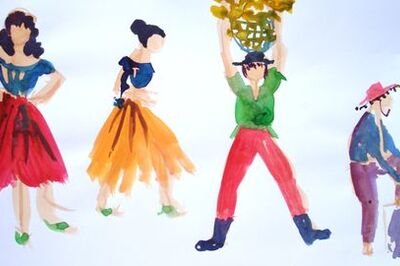
views
The earliest kind of print technology was introduction in China, Japan, and Korea. The uses of print became varied by the 17th century as modern culture emerged in China. Shanghai became the hub of the new print culture and it was gradually adopted by Japan through China.
Buddhist missionaries from China introduced hand-printing technology into Japan in AD 768-770. The oldest Japanese book printed in AD 868 is the Buddhist Diamond Sutra containing six sheets of text and woodcut illustrations. Pictures were printed on paper money, playing cards and textiles, reads the class 10 NCERT history chapter.
During the 11th century, Chinese paper had reached Europe through the silk route. In 1295, Marco Polo, a great explorer returned to Italy with full knowledge of printing. Thereafter, Italians started printing books with woodblocks and the technology soon reached to every part of Europe.
This started the export of books, and Europe began shipping books to different countries. However, manuscripts were fragile, which made them very cumbersome and unwieldy to work with. Thus, in the 1430s Johann Gutenberg invented a new printing technique and created the first known printing press in Strasbourg, Germany. Gutenberg’s first printed book was the Bible, published in 1448.
The Impact of Print Revolution Across the World
A new culture emerged over time and people got access to books which helped create a reading culture among people. However, at the same time, the growth of printing technology led to several debates as several used it raise their voices. In 1517, Martin Luther wrote ‘Ninety-Five Theses’ that had criticized severa practices of the Roman Catholic Church which in turn led to Protestant Reformation.
On the bright side, due to a rise in the reading culture, the literacy rate increased to aroud 60 to 80 per cent across countries. This led to the rise of newspapers and journals which carried information about wars, trades, developments and everything happening around the world.
Printing technology arrives in India
Around mid-16th century, the first printing press came to Goa through Portuguese missionaries. Jesuit priests learnt konkani and printed several tracts. It was by 1674 that more than 50 books were printed in Konkani and Karana languages. Catholic priests printed the first Tamil book in 1579 in Cochin. The first Malayalam book was printed in 1713. The English language press did not grow in India till quite late even though the English East India Company began to import presses from the late 17th century.
Printing technology leads to religious reforms, debates
By the 1820s, the Calcutta Supreme Court had passed certain regulations to control press freedom. After the revolt of 1857, the Vernacular Press Act was passed which provided the government rights to censor reports and journals in the vernacular press. However,despite such measures, nationalist newspapers grew in large numbers in all parts of India. A wider public could now participate. New ideas emerged through clash of opinions.
By the end of the 19th century, a visual culture was taking shape. By the 1870s, caricatures and cartoon and visual images began to be printed. New forms of publication had emerged.
To learn about other topics taught in school, explained by News18, here is a list of other Classes With News18: Queries Related to Chapters on Elections | Sex Versus Gender | Cryptocurrencies | Economy & Banks | How to Become President of India | Post Independence Struggle | How India Adopted Its Flag | Formation of States & United India | Tipu Sultan | Indian Teachers Day Different from Rest of the World |Queen Elizabeth & Colonialism |
Read all the Latest Education News here




















Comments
0 comment